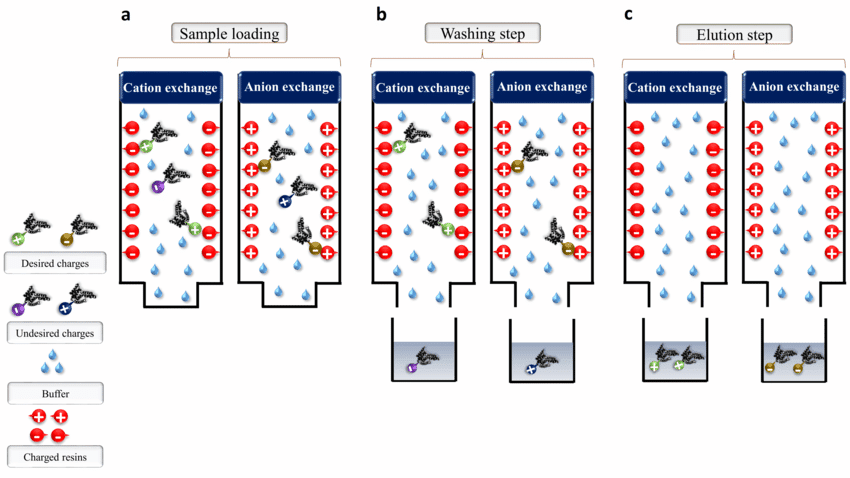Size Exclusion Chromatography: A Comprehensive Guide
Size exclusion chromatography (SEC), also known as gel filtration chromatography or gel permeation chromatography, is a powerful analytical technique used for the separation and analysis of macromolecules based on their size. In this article, we will delve into the principles, components, mechanism, instrumentation, applications, advantages, and limitations of size exclusion chromatography.
1. Introduction to Size Exclusion Chromatography
Size exclusion chromatography is a chromatographic technique that separates molecules based on their size and molecular weight. It is widely used in the biochemistry, molecular biology, polymer chemistry, and pharmaceutical industries for analyzing and purifying biomolecules, polymers, and nanoparticles.
2. Principle of Size Exclusion Chromatography
The principle of size exclusion chromatography relies on the differential partitioning of molecules between a porous stationary phase and a mobile phase. Unlike other chromatographic techniques that separate molecules based on their affinity for the stationary phase, SEC separates molecules solely based on their size.
3. Components of Size Exclusion Chromatography
3.1 Stationary Phase
The stationary phase in SEC consists of porous beads or gels with a defined pore size distribution. These pores allow molecules to enter and diffuse through the matrix. Larger molecules cannot penetrate deep into the pores and, therefore, elute first, while smaller molecules can enter the pores and elute later.
3.2 Mobile Phase
The mobile phase in SEC is typically a buffer solution that flows through the column, carrying the sample components. It does not interact with the stationary phase but aids in the elution of molecules based on their size.
3.3 Sample Injection
Samples for SEC are injected into the column after equilibration with the mobile phase. The sample volume should be minimal to prevent overloading the column and ensure optimal separation.
4. Mechanism of Separation
In SEC, larger molecules are excluded from the pores of the stationary phase and, therefore, travel through the column more quickly, resulting in shorter retention times. Smaller molecules, on the other hand, enter the pores and experience more interactions with the stationary phase, leading to longer retention times.
5. Column Packing Materials
The choice of column packing material is crucial for achieving optimal separation in SEC. Common materials include cross-linked dextran, agarose, polyacrylamide, and silica-based gels, with pore sizes ranging from tens to hundreds of nanometers.
6. Instrumentation and Setup
SEC systems consist of a column packed with stationary phase material, a pump for delivering the mobile phase, a detector for monitoring eluted components, and a data analysis software for interpreting chromatograms.
7. Procedure for Size Exclusion Chromatography
- Column Preparation: Equilibrate the column with the mobile phase.
- Sample Preparation: Prepare the sample in a compatible buffer solution.
- Injection: Inject the sample onto the column.
- Elution: Run the mobile phase through the column at a constant flow rate.
- Detection: Monitor eluted components using a suitable detector.
- Data Analysis: Analyze chromatograms to determine the size and molecular weight of sample components.
8. Applications of Size Exclusion Chromatography
8.1 Protein Purification
SEC is commonly used for purifying proteins from complex mixtures based on their molecular weight. It is an essential technique in protein biochemistry and structural biology.
8.2 Polymer Characterization
SEC is employed for characterizing the molecular weight distribution and polymer composition of synthetic and natural polymers. It is widely used in polymer chemistry and material science.
8.3 Analyzing Nanoparticles
SEC can separate and characterize nanoparticles based on their size and surface properties. It is valuable in nanotechnology and drug delivery research.
9. Advantages of Size Exclusion Chromatography
- There was no sample interaction with the stationary phase.
- High resolution and reproducibility
- Simple and easy-to-use technique
- Suitable for analyzing heat-sensitive and labile compounds
10. Limitations of Size Exclusion Chromatography
- Limited resolution for molecules of similar size
- Long analysis times for large molecules
- Limited compatibility with high-salt or viscous samples
11. Comparison with Other Chromatographic Techniques
SEC offers unique advantages compared to other chromatographic techniques, such as reversed-phase chromatography and ion exchange chromatography, making it a preferred choice for certain applications.
12. Tips for Successful Size Exclusion Chromatography
- Choose the appropriate column packing material and pore size.
- Optimise sample and buffer conditions.
- Calibrate the system with standard molecular weight markers.
- Monitor column performance and regeneration.
13. Future Trends and Developments
Advances in column technology, detector sensitivity, and data analysis software are driving improvements in SEC performance and capabilities. Future developments may focus on miniaturization, automation, and integration with other analytical techniques.
14. Conclusion
Size exclusion chromatography is a versatile and powerful analytical technique for separating and analyzing macromolecules based on their size and molecular weight. With its wide range of applications and numerous advantages, SEC continues to be an indispensable tool in various scientific fields.
15. FAQs about Size Exclusion Chromatography
-
What is the main principle of size exclusion chromatography?
- The main principle of SEC is the separation of molecules based on their size, with larger molecules eluting first and smaller molecules eluting later.
-
Can size exclusion chromatography be used for analyzing nanoparticles?
- Yes, SEC is commonly used for analyzing nanoparticles based on their size and surface properties.
-
What are some common stationary phase materials used in SEC?
- Common stationary phase materials include cross-linked dextran, agarose, polyacrylamide, and silica-based gels.
-
What are the advantages of SEC over other chromatographic techniques?
- SEC offers advantages such as no sample interaction with the stationary phase, high resolution, simplicity, and suitability for analyzing labile compounds.
-
How can I optimize my SEC analysis for the best results?
- Optimize SEC analysis by choosing the right column packing material, optimising sample and buffer conditions, calibrating the system with molecular weight standards, and monitoring column performance.

0 Comments